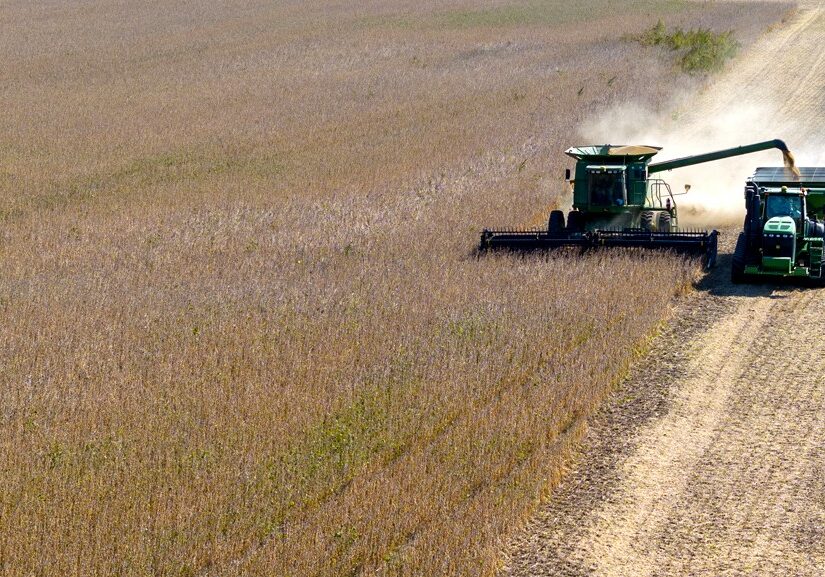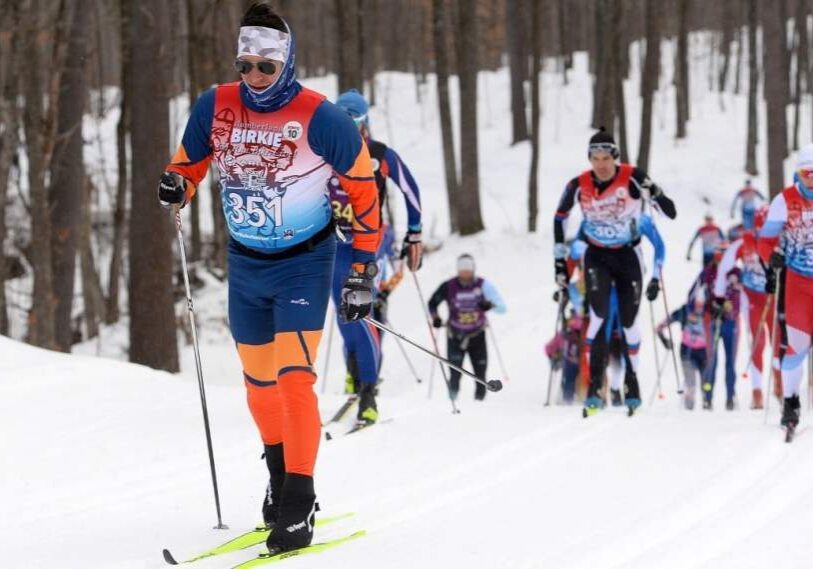DNR Shocks Trout to Check Health of Area Streams

WINONA COUNTY — Throughout southeast Minnesota’s blufflands, we hear the sweet burble, gurgle and rippling of trout streams running over riffles and through pools. But dozens of times a year, another sound is heard, the low humming of a generator.
It’s part of a health checkup for the streams, and to make sure a big boost to the region’s economy is also in good shape. A Trout Unlimited study several years ago found the entire 24,000-square-mile Driftless area of Minnesota, Wisconsin, Iowa and a bit of Illinois accounts for $1.62 billion annually in direct and indirect financial benefits. Minnesota has maybe 20 percent, meaning trout fishing adds about $320 million.
When the humming is heard, from a handful to 10 state employees are with the generators, with one, two or three holding long metal probes with a hoop on the end. Others hold small nets, looking a lot like lacrosse sticks. As they move slowly upstream, there may be another sound, much more subtle – the splash of a trout jumping out of the water. Those trout, however, aren’t back in the water long before they are netted and eventually put into tubs. Scores of more trout, however, just float up, stunned by the electrical shock; they are also scooped up and put into the tubs.
This is electroshocking, a common, hard-work, in-the-water, muscle-sapping method used to count trout. It’s not sophisticated, it’s just hard work. The generator produces a pulse that goes through the hoop – the electrical jolt stuns the fish that are netted, counted, maybe weighed and put back.
Bigger streams, such as the Root or Whitewater Rivers, require one DNR worker to pull a small barge with the generator and big tubs to hold fish. Others use the probes or nets. As they move upstream, the barge slowly begins to sink down in front with weight of fish and water. Once heavy, it’s moved off so others can count, weigh and measure them for length.
On smaller streams, one person carries a backpack with the generator and only a few others are in the water. All data are entered into a laptop.
It’s been done for decades on bluffland streams, many in the Root River basin, some in the Whitewater or streams that flow directly to the Mississippi River or even an Iowa river.
Stream health
“It tells you the health of the stream,” said Doug Dieterman, a Department of Natural Resources fisheries researcher who is one of the main people who take all the data from the shocking and other sources to see how streams are doing. Most of the fish they shock are trout, but there might be a sucker or even a sculpin mixed in. All are counted. What’s interesting is that certain fish prefer certain kinds of habitat, maybe shallow fast riffles or deep slow pools, he said.
What kinds of fish are in a river or stream is not only fun to know but also tells a lot about that health, he said. The Index of Biotic Integrity was developed nearly 50 years ago, using species and abundance of fish as a way to know how good the water is – certain fish need certain kinds of water. Many trout, for example, indicate water is good shape because they need clean, cooler water. Only carp and bullheads indicate troubled water.

A line of DNR fisheries workers move up the South Branch Whitewater River electroshocking fish to check the health of the trout stream. (Photo by John Weiss)
It’s slow, meticulous work that the crews will do up to seven weeks in spring and five weeks again in fall, said Melissa Wagner, DNR area fisheries supervisor in Lanesboro. They go out three or four times a week, most commonly four, depending on weather and stream conditions. They switch who does what to give people a break – holding the shocking wand is especially hard on the arms and shoulders.
At times, they get done early; at other times, on rivers and streams with lots of fish, they have worked into the dark, said Vaughn Snook, assistant Lanesboro supervisor.
The DNR shocks 10 long-term monitoring streams each year, Wagner said, and tries to shock all the others at least once every 10 to 15 years. The 10 are the South Branch Whitewater, Beaver and Trout Valley in the Whitewater, Garvin Brook near Stockton, Gribben near Lanesboro, Middle Branch Whitewater, South Branch Root River upstream of Forestville, Trout Run near Chatfield and Winnebago, Wagner said.
Some of the monitoring stations go back 30 years, some a few decades longer, Dieterman said. The South Branch Whitewater station was especially interesting this year because it’s where a major fish kill walloped the trout population eight years ago; 2023’s shocking found it loaded with trout, some up to 16 inches.
Data collection
Long-term monitoring waters is needed to give a wider picture of what’s happening, he said. If they just hit all streams every decade or so, they wouldn’t know if a stream had fewer trout because it’s hurting or it just had a poor-year class or two and the water is really in good shape, he said. Only looking now and then would show trout numbers “bouncing all over the place,” he said. Occasional shocking wouldn’t “have context to put an individual year into context of a longer time frame,” he said.
About 20 years ago, they decided that shocking wasn’t enough because it didn’t tell researchers all they needed, Dieterman said. They were seeing variability but couldn’t figure out why, so they began to also look at habitat, temperature, flow, bank cover, woody debris, water levels and other physical factors. A rule of hydrology is that you need 20 years of data to see what’s happening, he said. So far, “I don’t see a lot of changes in the physical habitat. so that’s probably not it,” he said.

DNR staff Vaughn Snook and Doug Dieterman measure trout for length and weight. (Photo by John Weiss)
Besides the regular shocking, the DNR does more for management plans to see if it’s worthwhile to buy a fishing easement, Wagner said. They like to get one shocking station of maybe 150 yards for each reach of the water. “We try to do stations we shocked in the past,” she said. Also, when they want to stock the new Minnesota Driftless brook trout this summer, they need to know more of what’s in a stream now, she said. “We get a holistic view of the stream,” she said.
Another critical use for shocking is deciding which streams will get stocked brown fingerlings, she said. They study a stream for three years and review the data before deciding. “A lot of people thing we dump fish in everywhere and we are not assessing what we are doing but we actually are,” she said.
Without shocking, managers would be at a huge disadvantage. “It guides almost all of our decisions we make, everything from an environmental review and where you might want to do a project,” Wagner said.
The DNR’s goal is to increase easements where they have gaps in existing ones and get more easements to spread out the pressure, to give more opportunities throughout the entire region.
There’s one more thing: “It’s interesting to learn what’s in those streams,” she said.
View a short video of the DNR fisheries team electroshocking on the Whitewater River (spring, 2023): Learn more at these Minnesota DNR links:






